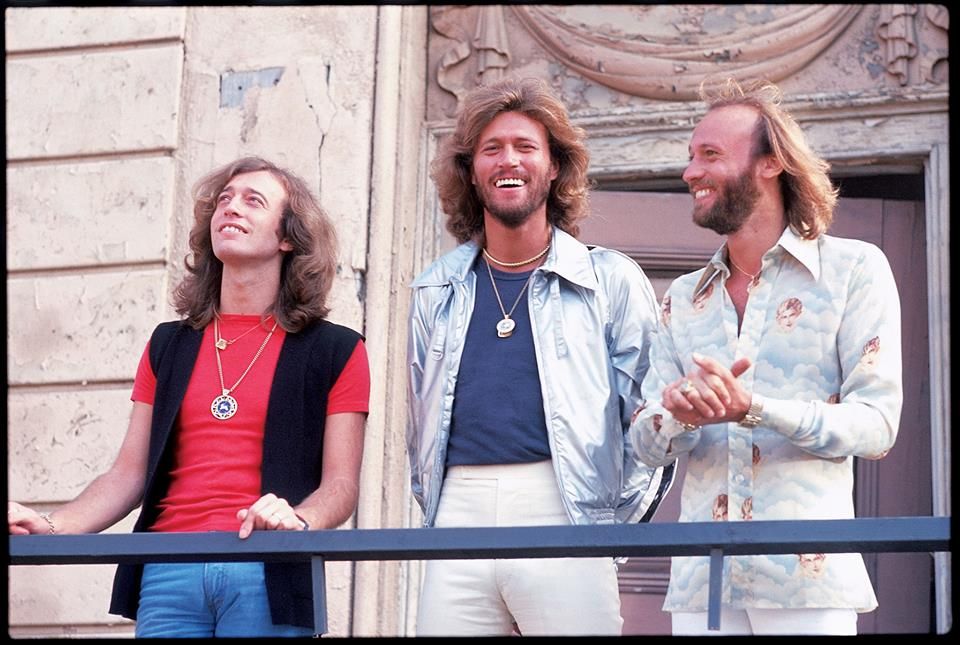
A Timeless Anthem of Resilience and Survival
“Stayin’ Alive” by the legendary Bee Gees is more than just a song; it is an anthem that encapsulates the spirit of resilience and survival, echoing through generations with its pulsating beat and defiant lyrics. Released in 1977 as part of the soundtrack for the iconic film Saturday Night Fever, this track quickly soared to prominence, securing its place in the annals of music history. Upon its release, “Stayin’ Alive” achieved remarkable success, reaching number one on the Billboard Hot 100 chart in February 1978, where it remained for four consecutive weeks. The song became synonymous with the disco era, a musical movement that defined a generation and left an indelible mark on pop culture.
The story behind “Stayin’ Alive” is as compelling as its rhythm. Created by the Gibb brothers—Barry, Robin, and Maurice—the track was born during a turbulent period marked by personal challenges and societal changes. The Bee Gees, who had already experienced significant success in the 1960s, found themselves at a crossroads as musical tastes evolved. Yet, it was precisely this climate of uncertainty that fueled their creativity, leading to the creation of a song that speaks to the universal struggle of enduring life’s trials.
The lyrics of “Stayin’ Alive” convey a powerful message of perseverance in the face of adversity. Lines like “Life’s goin’ nowhere, somebody help me” resonate with listeners who have felt overwhelmed by life’s challenges. The song’s driving beat and infectious melody serve as a rallying cry for those who refuse to be defeated by their circumstances. It captures the essence of urban life in the late 1970s—a time when economic hardship and social upheaval were prevalent—and channels it into a celebration of human tenacity.
Musically, “Stayin’ Alive” is a masterpiece of production. Its signature bass line, crafted by Maurice Gibb using a synthesizer loop, creates an irresistible groove that compels listeners to move. The song’s distinctive beat was meticulously engineered by producer Albhy Galuten and engineer Karl Richardson, who layered tracks to achieve its unique sound. The vocals, led by Barry Gibb’s iconic falsetto, add an emotional depth that complements the song’s themes of survival and hope.
The impact of “Stayin’ Alive” extends far beyond its initial release. It became an integral part of Saturday Night Fever, a film that not only popularized disco music but also captured the zeitgeist of an era. John Travolta’s memorable dance sequences set to “Stayin’ Alive” became cultural touchstones, immortalizing both the song and the movie in popular culture. Even today, decades later, “Stayin’ Alive” remains a staple on dance floors around the world and continues to inspire new generations with its timeless message.
Beyond its entertainment value, “Stayin’ Alive” has found unexpected applications in fields such as healthcare. Its tempo of 103 beats per minute closely matches the recommended rate for performing CPR compressions, leading to its use in CPR training programs globally. This practical application underscores the song’s enduring relevance and its ability to transcend its original context.
For those who lived through the disco era, “Stayin’ Alive” evokes a sense of nostalgia—a reminder of nights spent dancing under glittering disco balls and a testament to the transformative power of music. For younger audiences discovering it anew, it serves as an introduction to an era defined by bold fashion choices and even bolder sounds.
In reflecting on “Stayin’ Alive,” one cannot overlook its role in shaping both the Bee Gees’ legacy and the broader musical landscape. It stands as a testament to their ability to adapt and innovate, even when faced with uncertainty. As we listen to its familiar strains today, we are reminded that no matter how daunting life’s challenges may seem, there is always strength to be found in staying alive—one beat at a time.